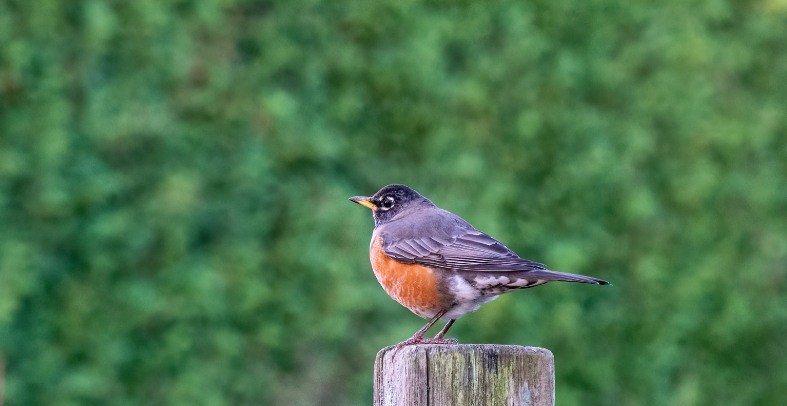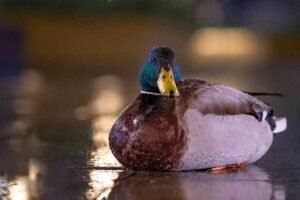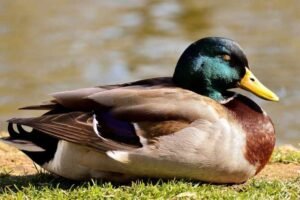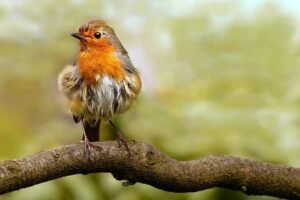There are several factors that should be taken into consideration whilst trying to attract birds to your garden. Here are 5 top tips for attracting birds to your garden. Fresh Water, Bird Feeders, Safety, Bright Colours, Shelter and Shade. Having these readily available will turn your garden into a bird sanctuary for a number of species.
1. Fresh Water
Freshwater is essential and will help attract a variety of birds to your garden. Birds need fresh water for two reasons: drinking and preening.
Supplying birds with fresh clean water will not only keep them hydrated but will also help keep a birds body cool and also help remove parasites and loose feathers whilst bathing.
“Dirty bird baths are a serious source of
rspb.org.uk
disease if not cleaned regularly”
Birdbaths are a great tool to help keep birds refreshed throughout the year. During the summer months, stagnant warm water can cause a series of problems if they are not attended to.
Things to consider when buying a birdbath:

- Static bird baths, need to be cleaned regularly.
- Place a small ping pong ball in the water to prevent it from freezing through the winter months.
- Invest in a solar panel bird bath and help reduce bacteria with flowing water.
- Place bird baths so that birds have clear visibility whilst bathing.
The sound of running water will also help attract birds to your garden and also reduce bacteria building up as opposed to having a static birdbath with stagnant water.
2. Bird Feeders
Attracting birds to your garden can depend on which kind of bird feeder your using, bird feeders come in a selection of styles and sizes:
- Ground Feeders
- Window Feeders
- Tube Feeders
- Nyjer Feeders
- Suet Feeders
Ground Feeders

Ground feeders attract the widest variety of seed-eating birds including Blackbirds, Mourning Doves, Pigeons, Starlings and Larks. Things to note are ground feeders offer no protection from the elements. With no means of protection, seeds that become wet can foster fungi and bacteria. If you intend to purchase or make your own ground feeder, make sure that the bottom of the ground feeder has sufficient drainage holes. It’s also imperative that you clean your feeders regularly to prevent the spread of disease. You can read our full article on ground feeders here.
Window Feeders
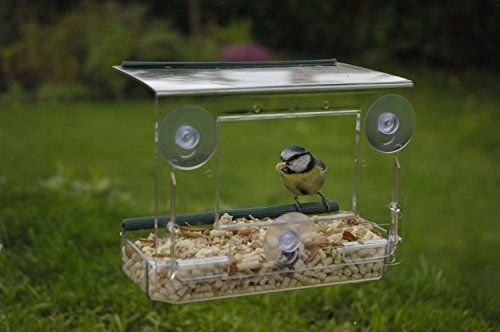
Window feeders are a great way to observe garden birds up close and are held in position with suction cups that are easily applied to your windows.
Many birds eat whilst standing on the seeds, so daily cleaning is a must in order to remove any soiled seeds. Compared to other feeders, window feeders must be the easiest to access for filling and daily cleaning.
Window feeders are also a good way to introduce your children to birds, not only will it keep that safe divide but also stimulate interest in the natural world as they become older.
Tube Feeders

Tube feeders is another top tip for attracting birds to your garden. They are ideal for hanging from tree branches and also feeding stations, they also allow easy access for smaller birds.
Feeding stations are also becoming very popular due to the fact that they are very versatile and can be placed anywhere in your garden.
Tube feeders are also noted for discouraging larger birds as they simply cannot land on the perches. Tube feeders are a great way of attracting a wide variety of smaller birds.
All tube feeders have feeding ports and perches, these ports are basically small holes that allow birds easy access to the seed. Some feeders have a perch above the feeding port, these types of feeders are design to attract Gold Finches and Chickadees.
Tube feeders by design can and will harness mould and bacteria simply by the way its constructed.
Before refilling, make sure that they are emptied and cleaned. The cheapest method for cleaning tube feeders are with 1 part white vinegar to 9 part water and then left to air dry.
Nyjer Feeders

Nyjer seed which is also referred to as (thistle) are very popular with Finches, Sparrows, Redpolls and Siskins, they also require a special type of feeder.
As a general rule, Nyjer feeders don’t have feeding ports, instead, they have slits that allow easy access for birds which also limits waste. They are easily noticeable with them being yellow in design.
Additionally, Nyjer seed can also be delivered by thistle socks which are fine-mesh bags that allow birds to cling to. However, thistle socks can become wet very easily over long periods of time. So make sure that your birds can consume them in a few days.
Suet Feeders

Suet feeders are mainly constructed of a wire mesh that is protected with a powder-coated material. These types of feeders also have a lid that you can easily open for restocking.
Feeding birds with suet feeders could help sustain some bird species through the long winter months by providing suet blocks. Suet is like a cake made of animal fat and gives life-saving protein.
3. Safety
Another top tip for attracting birds to your garden is safety. What do you mean by safety?
- Placing feeders next to bushes, shrubs or high in trees will help keep them safe from predators.
- Place bird baths so that birds have clear visibility whilst bathing.
- When placing feeders, its always a good idea to place them in shaded areas as this will keep your birds cool throughout the hot summer.
- Make sure you clean your feeders regularly as this will help restrict the spread of diseases.
4. Bright Colours
Bright colours can attract a variety of bird species. Hummingbirds are especially influenced by dramatic colours. Please note that bird species are very much dependant on your location.
BRIGHT PINK OR RED = Humming Birds
ORANGE = Orioles and Humming Birds
YELLOW = Gold Finches and Warblers
BLUE = Blue Jays and Blue Birds
5. Shade and Shelter
By providing shade and shelter, we give birds a safe place for them to roost. Different birds roost in different ways, but they all choose to sleep where it’s secure, comfortable and well protected from potential predators.
Help the animal wildlife foundation keep track of the different species of birds you see in and around your home using Project Feeder Watch.

